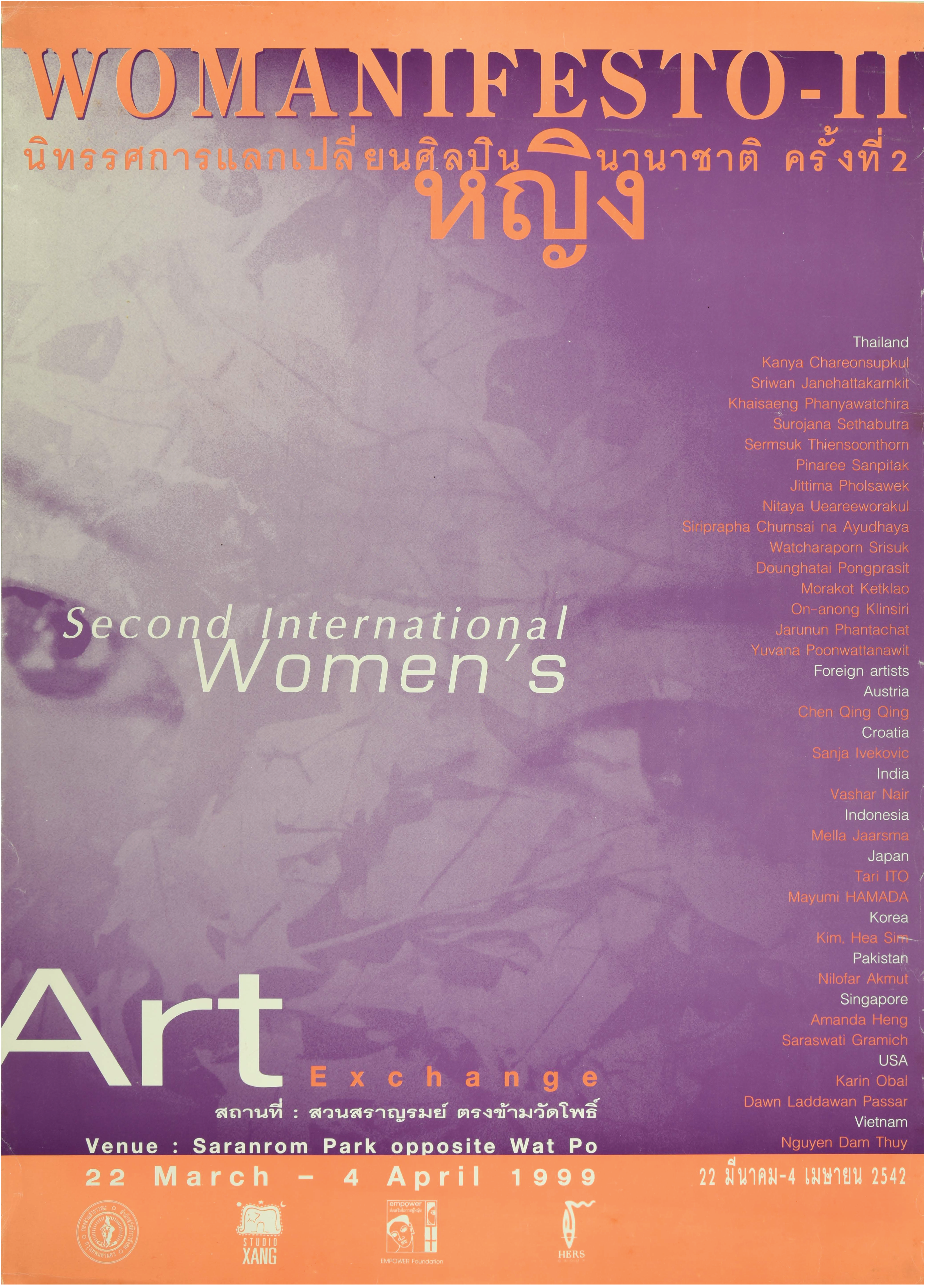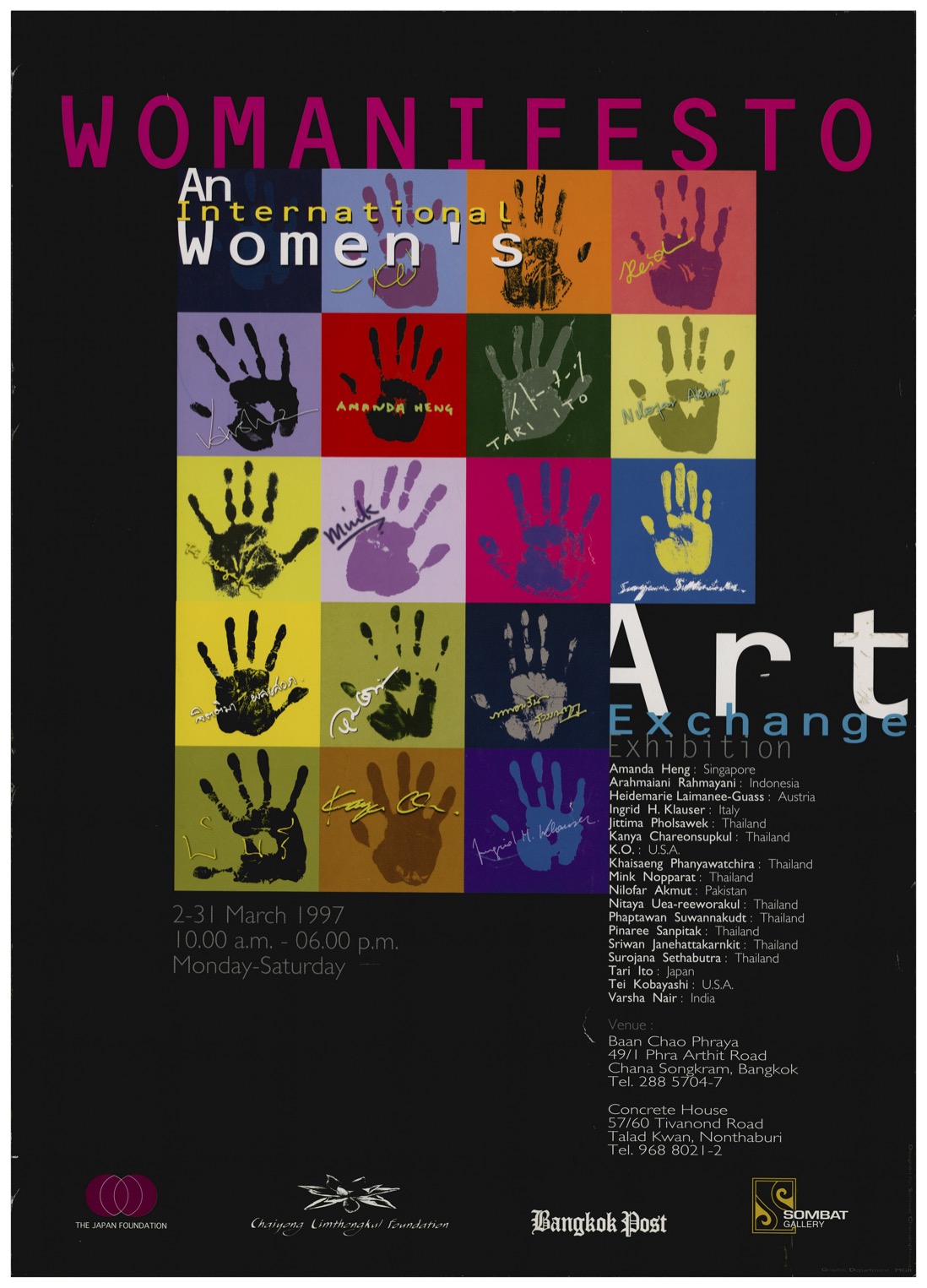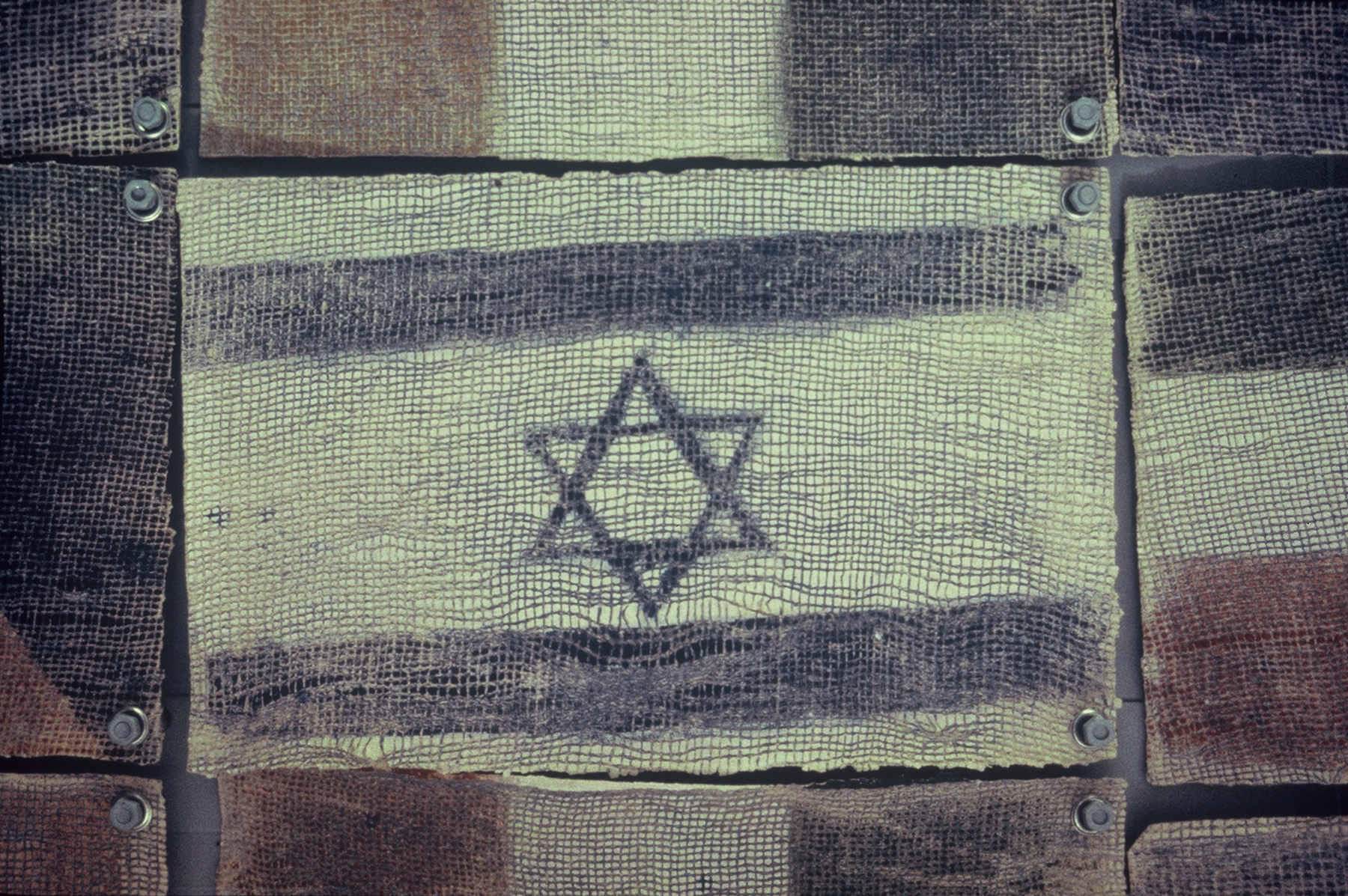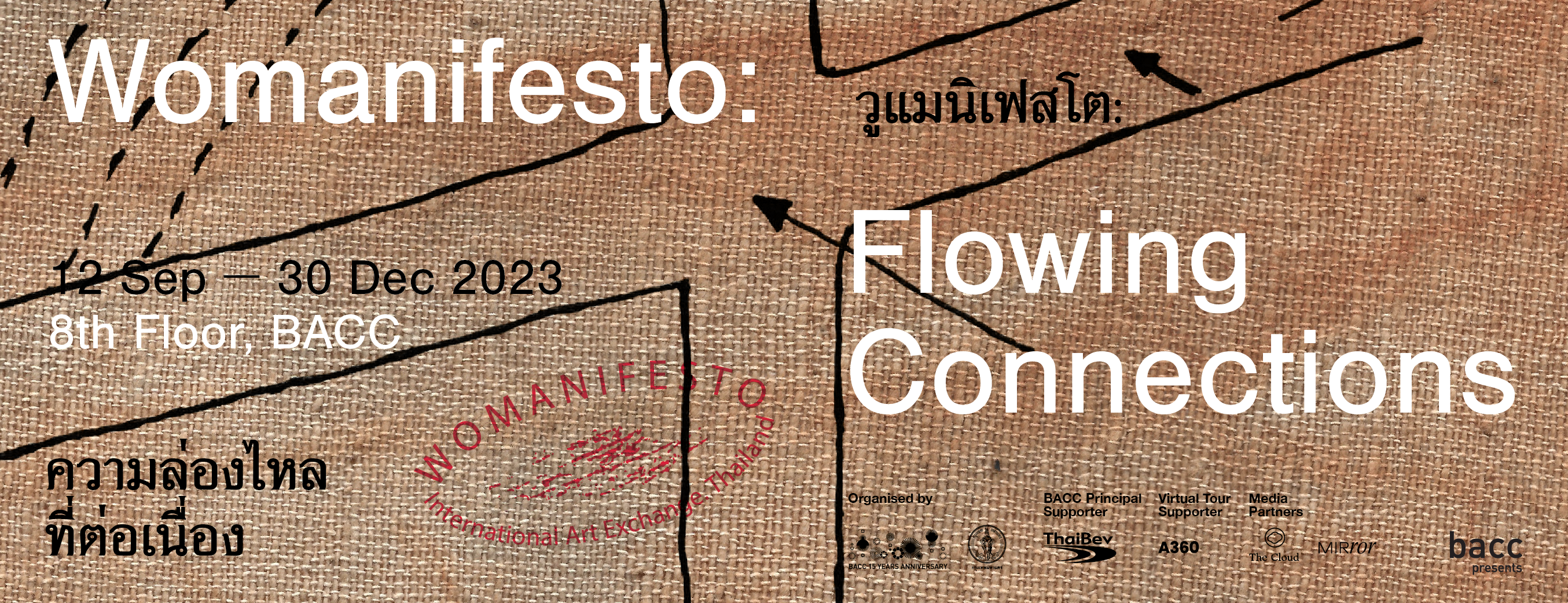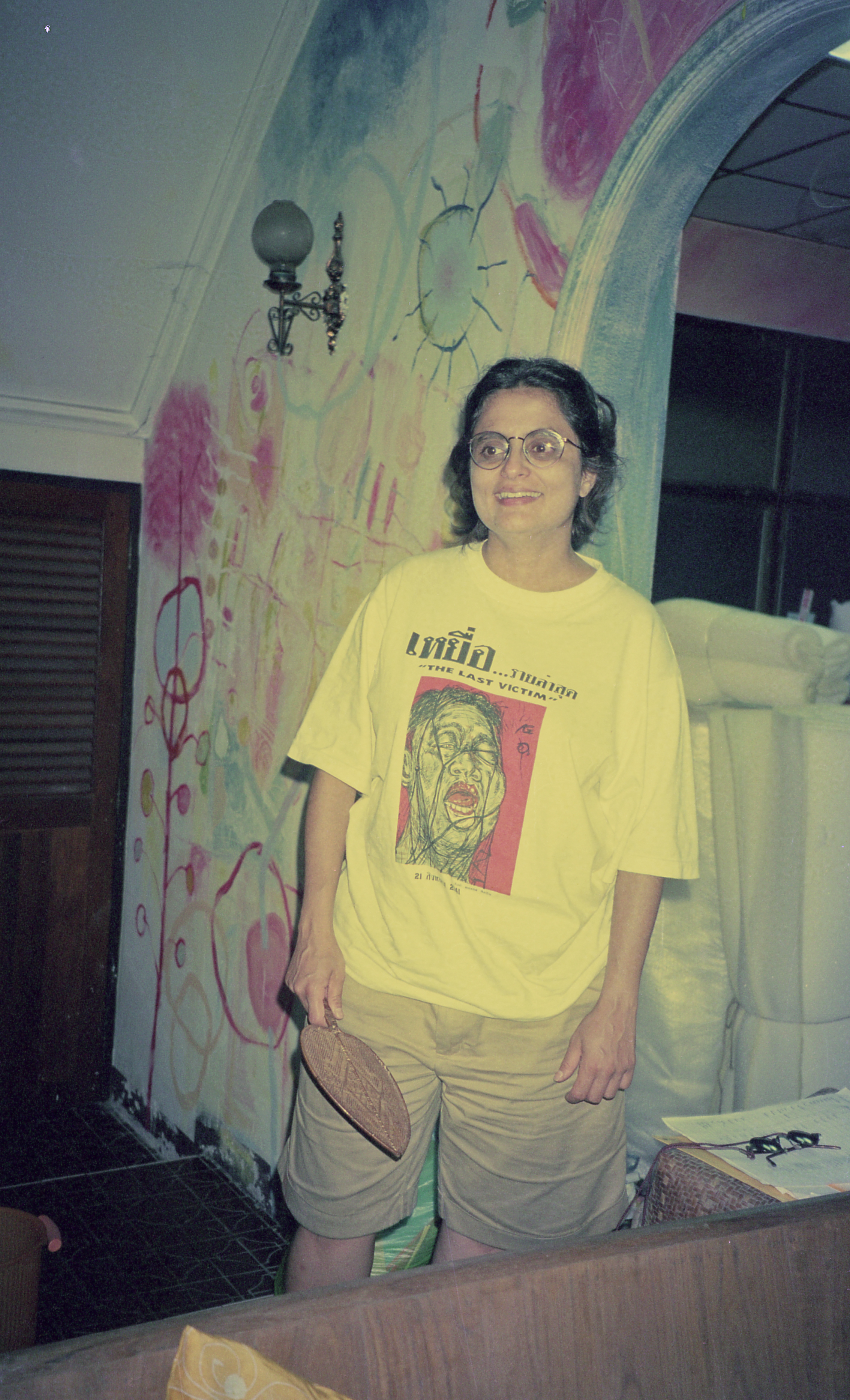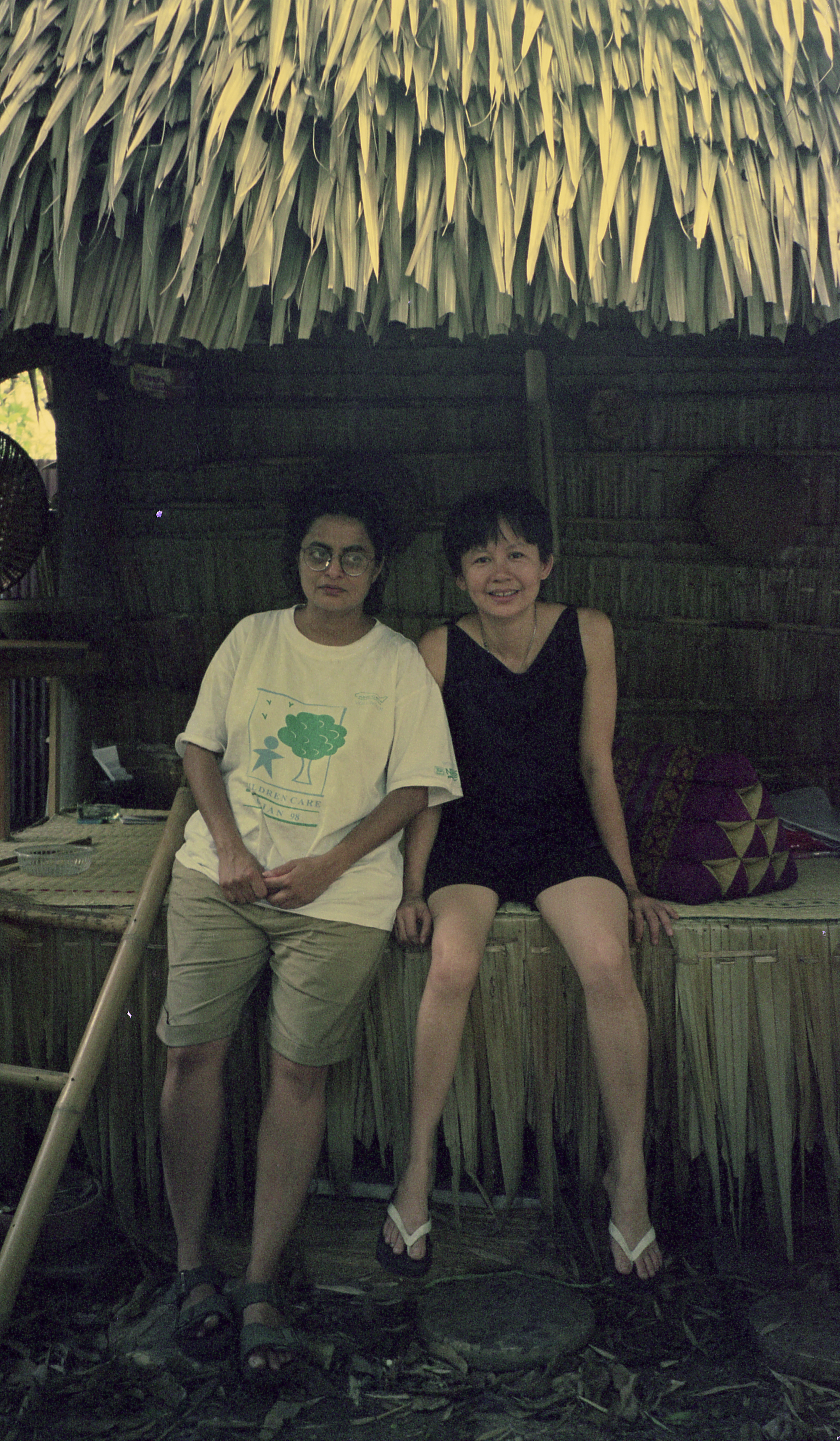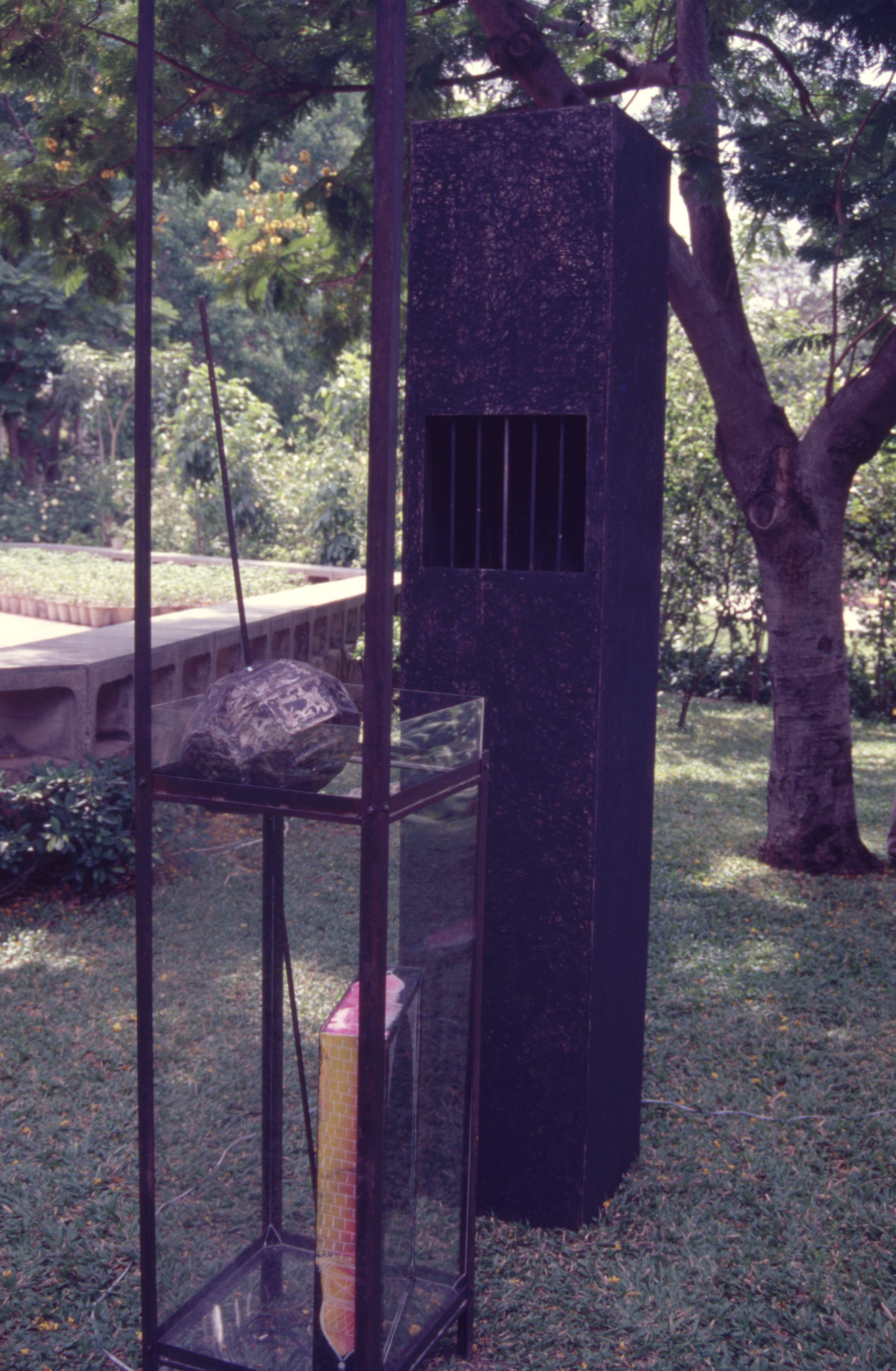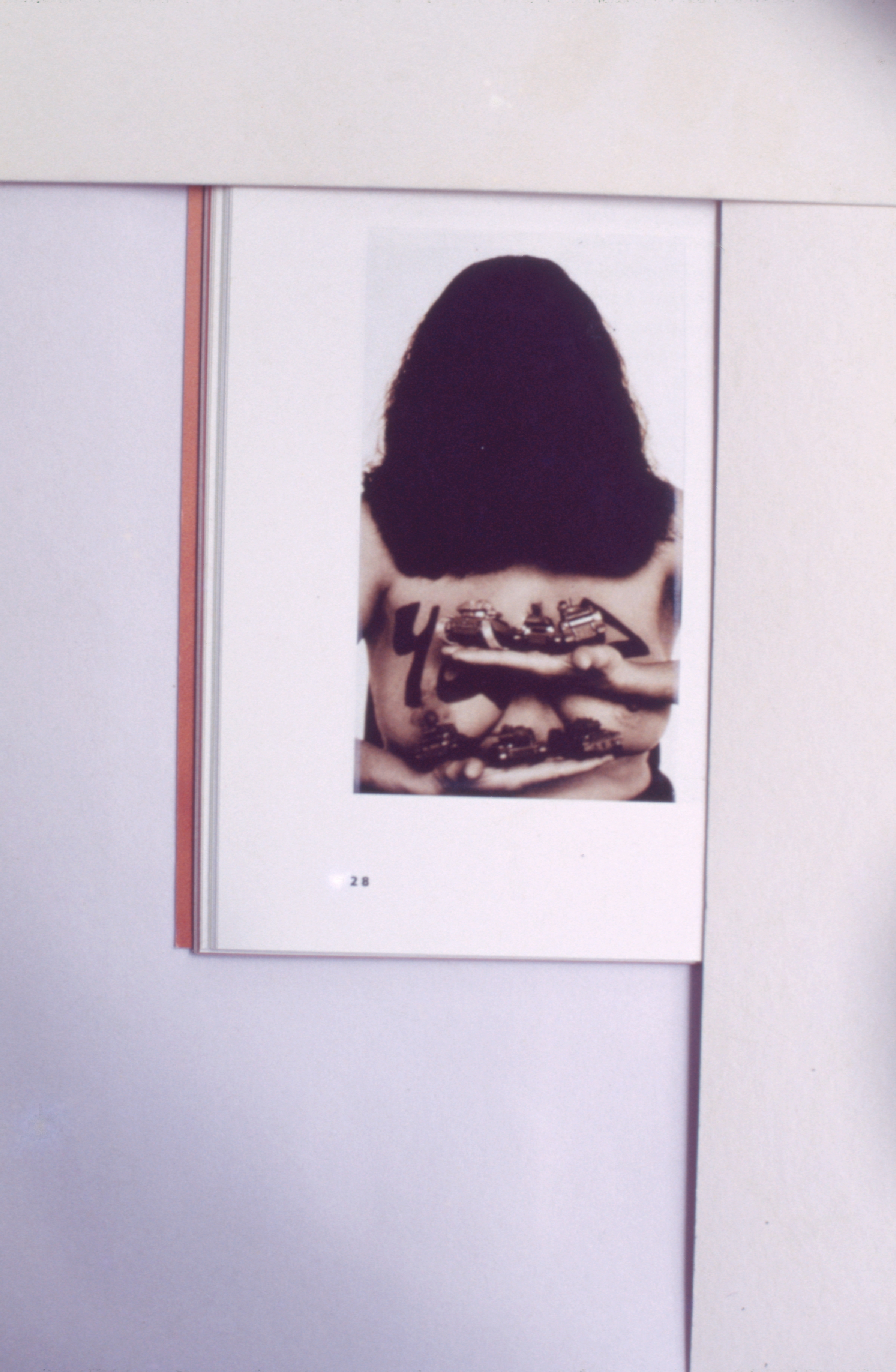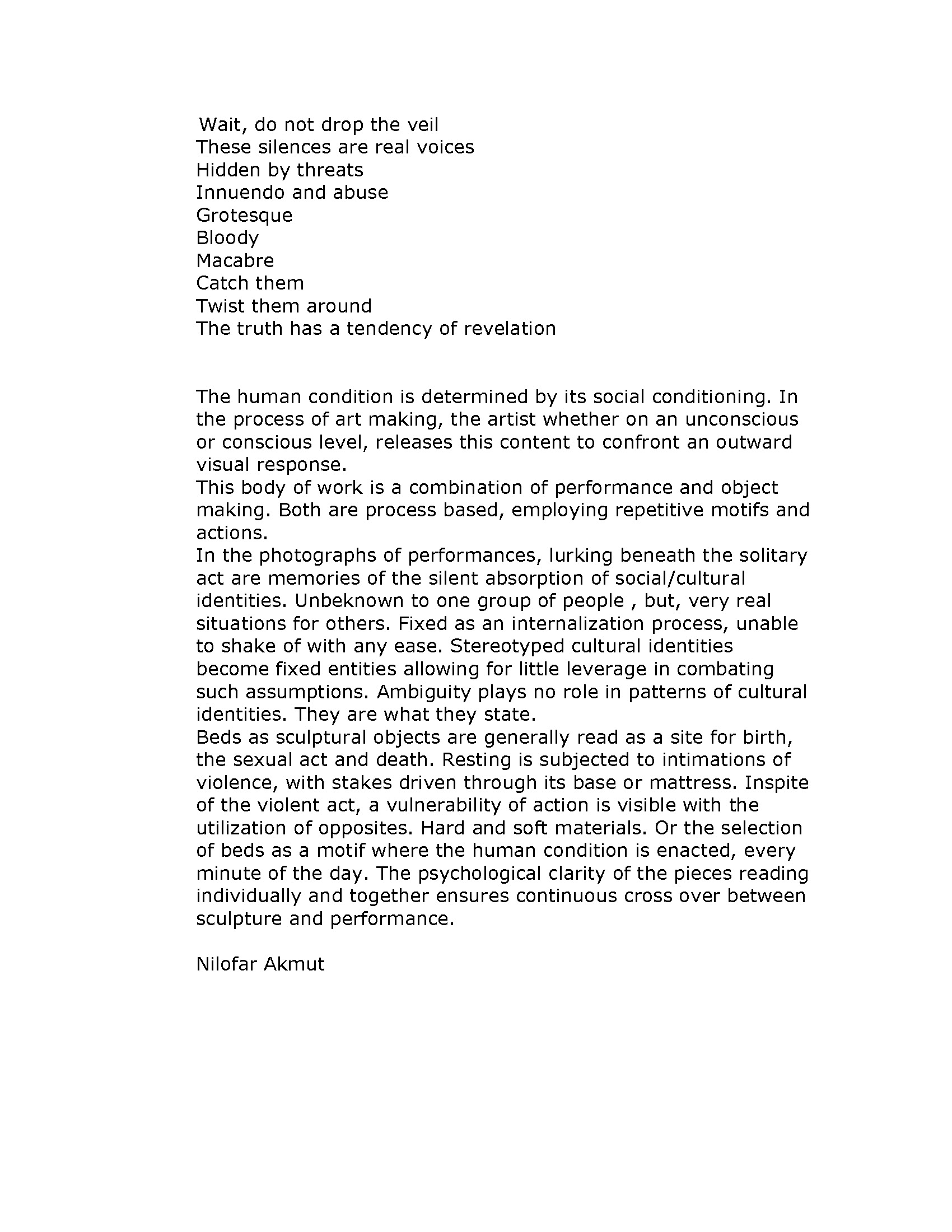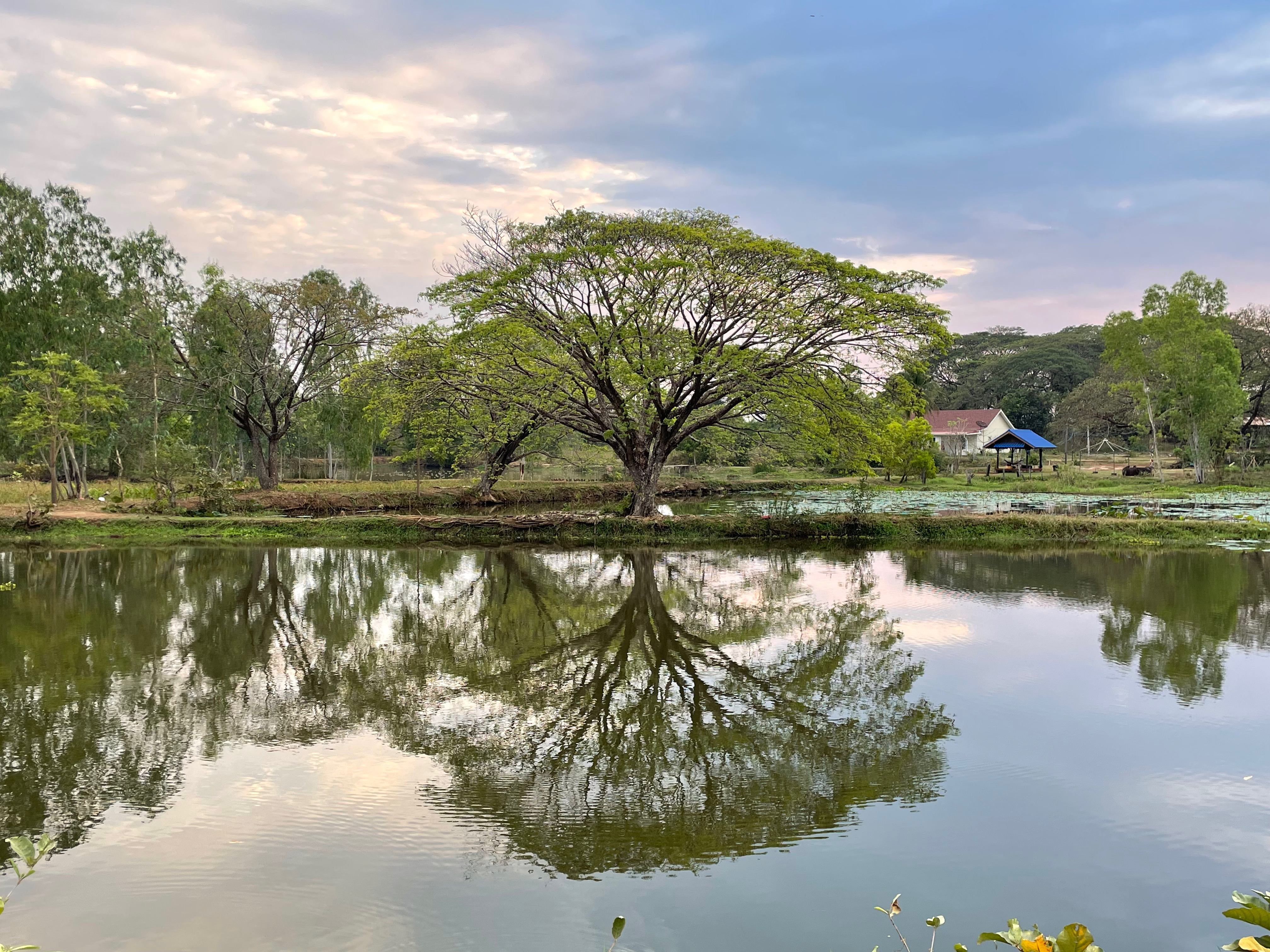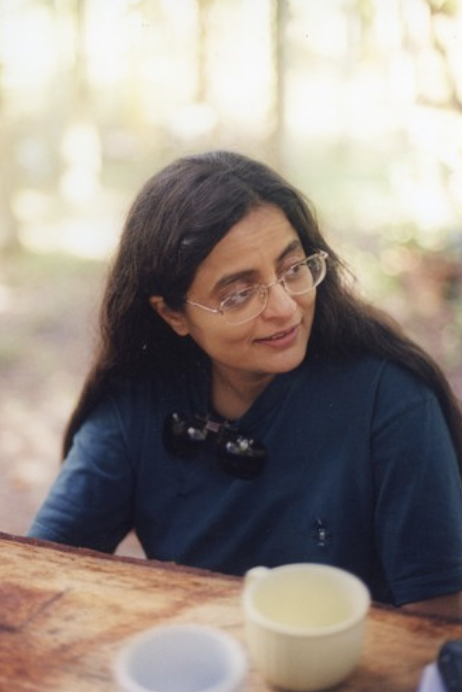
Nilofar Akmut is an artist, performer and poet born in London and raised in Pakistan, presently based in London. She has studies at numerous institutions: the NCA in Lahore, Pakistan; Byam Shaw school of Art; Slade School of Art; and the Royal Holloway in the U.K Akmut has also collaborated on several projects with the renowned artist Jo Spence. Her exhibitions span across various international venues including Transition of Riches (Birmingham Museum, U.K.); DWOTIS (Fukuoka Museum of Asian Art, Japan); IFOOFMB (Setayaga Museum, Japan); Subjected Culture (Argentina); Flames (Germany); Dhaka Biennale (Bangladesh); Womanifesto (Thailand Germany); T. Southeast Asia Triennial (China); Lahore Biennale (Pakistan); and Slaughterhouse (U.K.).
Akmut’s participation in Womanifesto has a historical precedence. She lived in the U.K. and was involved in the initial stages of the British Black Art movement. Artists of colour are discriminated and marginalized from mainstream exhibition spaces. Many decades forward these hardened attitudes towards their ethnic minorities are undergoing changes. She also collaborated with the photo-therapist Jo Spence before she moved to the Middle East. Eventually she returned to the U.K. In 1994 she was invited to exhibit at the Fukuoka Asian Art Museum in Japan. It is here she met Navin Rawanchaikul, who invited her to perform at the Chang Mai Social Installation in Thailand in the 1990’s. Nitaya Ueareeworakul the co-founder of Womanifesto visited her at the Chang Mai Social Installation where she was performing in the local monastery’s men’s quarter. Ueareeworakul invited her to participate with various Womanifesto projects. Her involvement with Womanifesto came with her desire to interact and exchange ideas with South Asian, South-East Asian and other artists from the post-colonial developing world in their own spaces, on our own terms. Here she found the possibility of exchange and discussion on a cultural social and political level that reflected her identity as a non-western person who lives between the East and West alongside her counterparts.
Related pages
Share a Reflection
log in to share a reflection.

